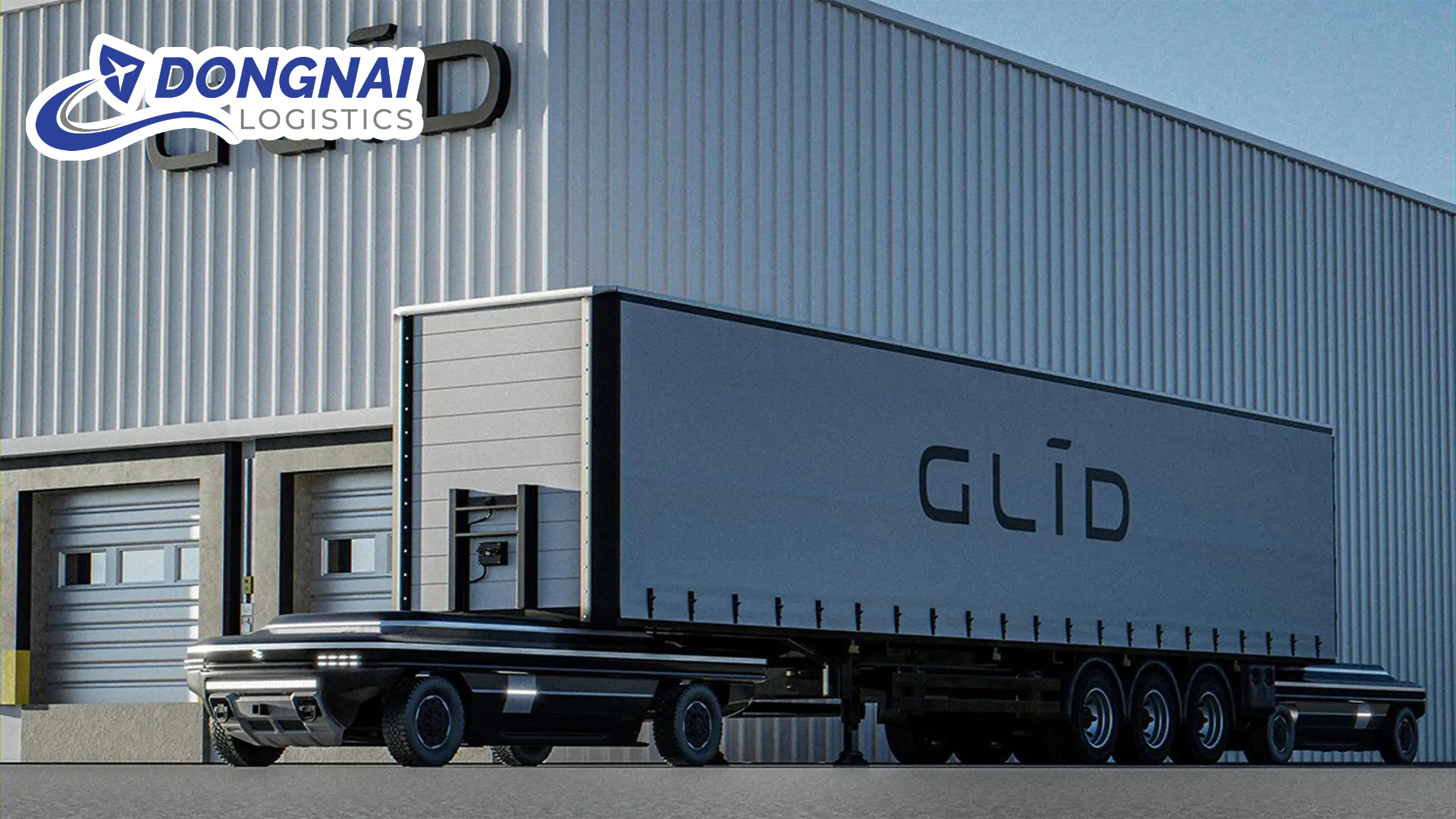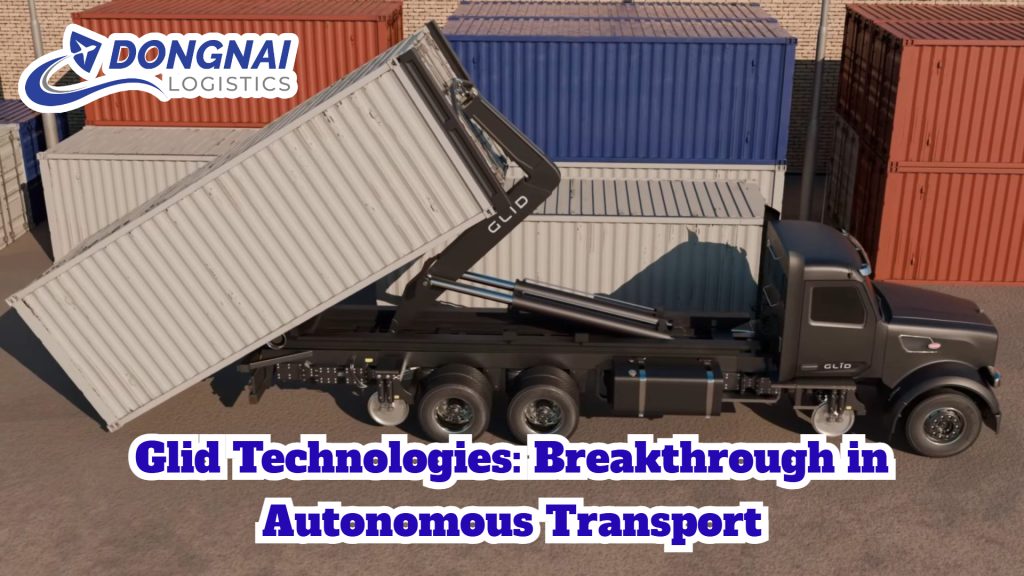Glid Technologies’ Glider: The Autonomous Rail-Road Truck Revolutionizing Freight Transport
In the era of automation and green technology, Glid Technologies is leading a groundbreaking innovation that transforms the global logistics and freight transport industry. Their flagship product, the Glider — an autonomous rail-road hybrid truck — is set to revolutionize how goods are moved by combining the flexibility of road transport with the efficiency of railways. This technology addresses key challenges in cost, speed, and environmental impact, marking a new milestone for sustainable and intelligent logistics.

1. Glid Technologies Introduction and the Glider Project
Glid Technologies, headquartered in Salt Lake City, Utah, is a pioneering startup aiming to reshape freight transportation by merging road and rail modes into a seamless system. The company unveiled the world’s first autonomous rail-road hybrid truck named Glider, which operates without a traditional driver’s cabin or human operator on board.
Currently, Glid Technologies is testing the Glider on a 60-kilometer railway route between Willits and Fort Bragg in California, operated by Mendocino Railway. The initial trial runs have demonstrated the vehicle’s feasibility and efficiency, validating the concept of an autonomous hybrid freight truck. This success lays the groundwork for scaling the project and expanding its application worldwide.
2. Glid Technologies’ Glider Design and Autonomous Technology
The design of Glid Technologies’ Glider is revolutionary. It features no driver cabin or seat, fully operated by artificial intelligence and advanced automation systems. The vehicle can switch between two modes: driving on the road like an electric truck and running on railway tracks like a miniature locomotive.
Capable of carrying a 36,000 kg semi-trailer on highways and then seamlessly transitioning to railway tracks, the Glider can reach speeds up to 129 km/h on rails. Its autonomous docking mechanism connects securely to the semi-trailer’s chassis without any human intervention. Furthermore, the Glider can be remotely controlled from a central command center, offering flexibility and safety in operation.
The main frame of the Glider attaches to the semi-trailer, transporting cargo loads up to 36 tons efficiently across both road and rail infrastructures.
3. Glid Technologies’ Integration of Road and Rail: Multimodal Innovation
While the concept of multimodal transport has existed for decades, its optimization was hindered by the lack of flexible connecting vehicles. Glid Technologies’ Glider fills this critical gap by enabling direct transfer of cargo from road to rail without unloading.
This innovation eliminates unnecessary handling, reducing time, labor, and transshipment costs. Cargo can be picked up directly from warehouses by truck, then smoothly loaded onto railway lines, improving overall logistics speed and reliability.
By bridging the flexibility of trucks with the capacity and energy efficiency of trains, Glid Technologies is redefining the future of multimodal freight transport.
4. Glid Technologies and Environmental Sustainability Benefits
Beyond technical innovation, Glid Technologies prioritizes environmental sustainability. The Glider runs fully on electric power, producing zero greenhouse gas emissions and generating minimal noise pollution.
Compared to traditional diesel trucks and locomotives, this technology represents a significant leap toward green logistics. Utilizing existing rail infrastructure also helps alleviate road traffic congestion and decreases accident risks by reducing the number of heavy trucks on highways.
The ecological benefits of Glid Technologies’ Glider align perfectly with global efforts to combat climate change and promote sustainable development in the transportation sector.
5. Glid Technologies’ Applications in Various Industries
According to Glid Technologies, the Glider is suited for transporting a wide range of goods, including:
-
Industrial materials such as wood, stone, metal, and cement
-
Bulk agricultural products like grains, fruits, and seeds
-
Military equipment and heavy machinery
-
Industrial waste management
-
Intermodal containers for logistics hubs
Currently, the focus is on mineral materials, agricultural products, military cargo, and waste. However, the technology’s versatility opens opportunities for broader applications in e-commerce logistics, cold chain transportation, and emergency rescue operations in the near future.
6. Glid Technologies’ Glider Benefits: Efficiency, Sustainability, and Automation
6.1 Enhanced Freight Efficiency
The combination of road and rail transport optimizes delivery routes, reduces transit times, and lowers fuel consumption. Autonomous operation allows continuous running without driver fatigue, increasing overall productivity.
6.2 Environmental Impact Reduction
Operating solely on electric power, the Glider significantly cuts CO₂ emissions and noise pollution. This supports sustainability goals and positions Glid Technologies as a leader in eco-friendly freight solutions.
6.3 Addressing Labor Shortages
Automation reduces dependency on human drivers, tackling labor shortages in the logistics sector. This capability becomes crucial as demand for freight transport grows globally.
7. Glid Technologies’ Challenges and Future Prospects
Despite its promising advantages, Glid Technologies faces several challenges:
-
Infrastructure Investment: Upgrading and adapting current transport infrastructure to support smooth road-to-rail transitions is necessary.
-
Regulatory Framework: Autonomous rail-road vehicle operations require legal adjustments and regulatory approvals.
-
Public and Industry Acceptance: Building trust and adoption among communities, stakeholders, and industries will take time.
With technology evolving rapidly and the urgent need for sustainable logistics, Glid Technologies’ Glider is well-positioned to become a key player in the future of freight transportation worldwide.

Glider – A Promising Future for Logistics
Glid Technologies’ Glider represents a major step forward in freight innovation, merging the best of trucks and trains. Its enhanced efficiency, environmental friendliness, and automation promise to redefine the logistics landscape. Despite some hurdles ahead, Glid Technologies is paving the way for a smarter, greener, and more connected transport future.
Explore more about the future of freight innovation.
Read more:
Vận tải biển: Xương sống của chuỗi cung ứng toàn cầu
Vải Vận Chuyển Từ Đồng Nai Sang Phần Lan Bằng Đường Biển
Vận chuyển hàng hóa từ Đồng Nai đi Phú Quốc
Chuyển phát nhanh từ Quảng Ninh đến Đồng Nai chất lượng, uy tín, giá cạnh tranh

